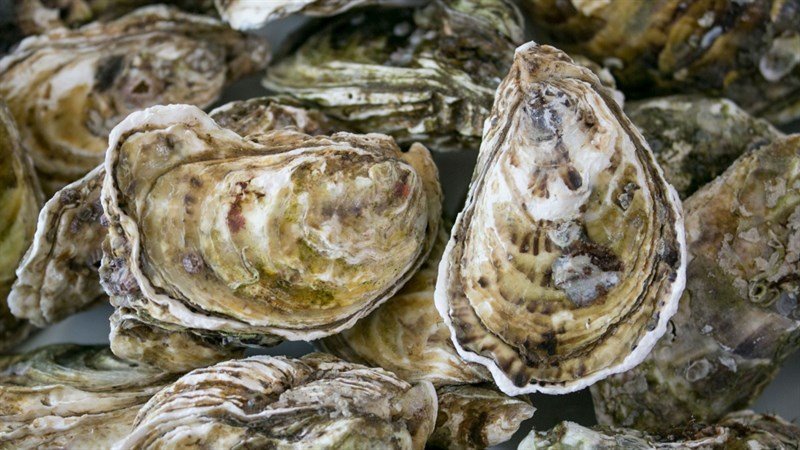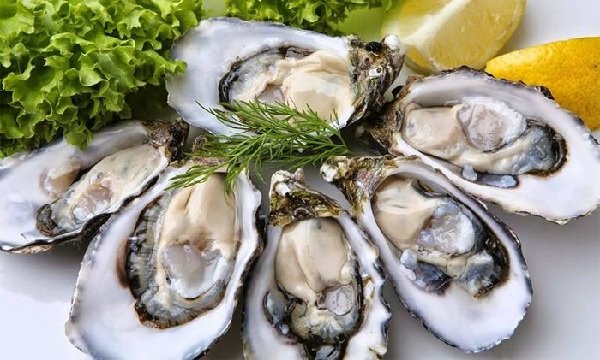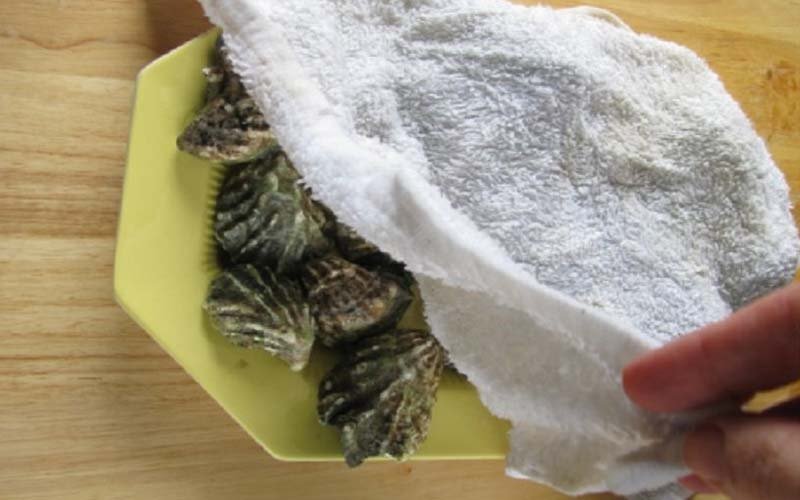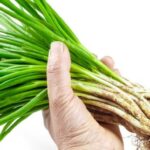When it comes to choosing fresh and tasty oysters, careful observation is key. Oysters have tightly closed shells, and knowing how to select the freshest ones is an art.
Here are some secrets to choosing the best oysters:
Look at the Shape
Pay attention to the tip of the oyster’s shell. Oysters with a pointed tip tend to have more meat inside.
The tastiest oysters usually have tightly closed shells and retain a certain amount of saltwater inside.
Fresh oysters are challenging to pry open, so be prepared for a workout!
Avoid oysters that can be easily opened by hand, as these are likely past their prime.
Oysters often cling to heavy objects like rocks. During harvesting, they may be pried off along with the attached rock. When buying oysters, choose individual ones with smoother shells. Avoid those with rough, clustered shells.

Tap the Shell
Tap the oyster’s shell and listen for a hollow sound. If it’s silent, the oyster is likely old and dry, with none of the juicy meat you’re looking for.
Examine the Meat

When you pry open an oyster and see that the meat is still firmly attached to the shell and there’s some liquid inside, it’s a sign of freshness.
Avoid oysters with greenish meat, as these are egg-carrying oysters and will taste bitter.
If the oyster’s intestines show visible veins, it’s a sign that the oyster has been soaked in water for too long, and the meat won’t be as fresh and tasty.
Avoid Soaked Oysters
Oysters don’t need to be soaked after harvesting. Choose dry oysters instead of those soaked in water.
Don’t Buy Shucked Oysters
Oysters are at their freshest when they’re still in their shells. Once shucked, the meat quickly loses quality and becomes prone to bacterial growth.
It’s best to choose whole oysters and have the seller shuck them for you on the spot, ensuring maximum freshness.
If you buy pre-shucked oysters, pay attention to the production date, expiration date, and storage conditions. The meat should be sealed in airtight packaging and kept refrigerated.
Storing Oysters
If you’re not eating your oysters right away, here’s how to store them:
– Place the oysters in a tray with the tip facing down.
– Dampen a cloth with cold water.
– Cover the oysters with the damp cloth and place the tray in the refrigerator.

With this method, your oysters will stay fresh for up to three days.
Shucking Oysters
Oyster shells can be tricky to open, and they tend to hold a lot of dirt and sand. Make sure to give them a good rinse under a strong stream of water. You can even use a brush to scrub the shells clean.
After rinsing, place the oysters in a colander to drain, and then it’s time to shuck.
This process requires some dexterity and caution. First, carefully examine the edges of the shell. Hold the oyster firmly in one hand and use a sharp knife to gently pry the shell open. Twist the knife slightly to separate the shells.

For oysters with softer shells, like oyster milk, you can use a large pair of scissors to cut along the edge of the shell. Then, use the tip of the scissors to pry the shells apart gently.

Once shucked, you can serve the oysters on a plate, grilled, or steamed, depending on your preference.
If shucking proves too challenging, you can also try lightly steaming the oysters for 1-2 minutes to loosen the shells. Alternatively, place them in a microwave for a short burst or on a grill for 2-3 minutes to encourage the shells to open. These methods are excellent options if you plan to cook the oysters with buttered onions or cheese.
According to Vietnamnet
Preserving Green Onions: Skip the Fridge and Try These Two Tips Instead for Long-Lasting Freshness
Onions are a staple ingredient in many dishes and for good reason. This humble vegetable is a powerhouse of flavor and aroma. When added to soups, a sprinkle of chopped onion works wonders to neutralize any fishy odors and enhance the fragrance of the broth. But its versatility doesn’t stop there; it’s also a fantastic garnish, adding that extra touch of flavor and color to any meal.
Should You Choose Large or Small Carrots When Shopping?
Carrots have earned the nickname “little ginseng” due to their abundant nutrient content, especially carotene. This humble root vegetable is a staple in households across the globe. To ensure you’re getting the best carrots, packed with flavor and nutrients, here’s a quick guide on how to select the finest ones.
The Secret to Keeping Coriander Fresh All Year Round
Introducing the ultimate guide to keeping your cilantro fresh and vibrant for up to a year! Say goodbye to wilted, rotten herbs and hello to a vibrant, flavorful addition to your meals. With the tips and tricks from seasoned chefs, you’ll be able to transform your culinary creations and elevate your dishes to new heights. Learn the secrets to prolonging the lifespan of this delicate herb and enjoy its aromatic flavors all year round.
The Secret to Keeping Pork Fresh: Don’t Refrigerate, Try This Marinade Instead
For years, there has been a common misconception that freezing pork directly will result in tough and dry meat. However, a seasoned chef has revealed a secret technique that guarantees fresh and tender pork every time. Unveil the mystery behind this age-old trick and discover the key to unlocking the true potential of your pork dishes.






































